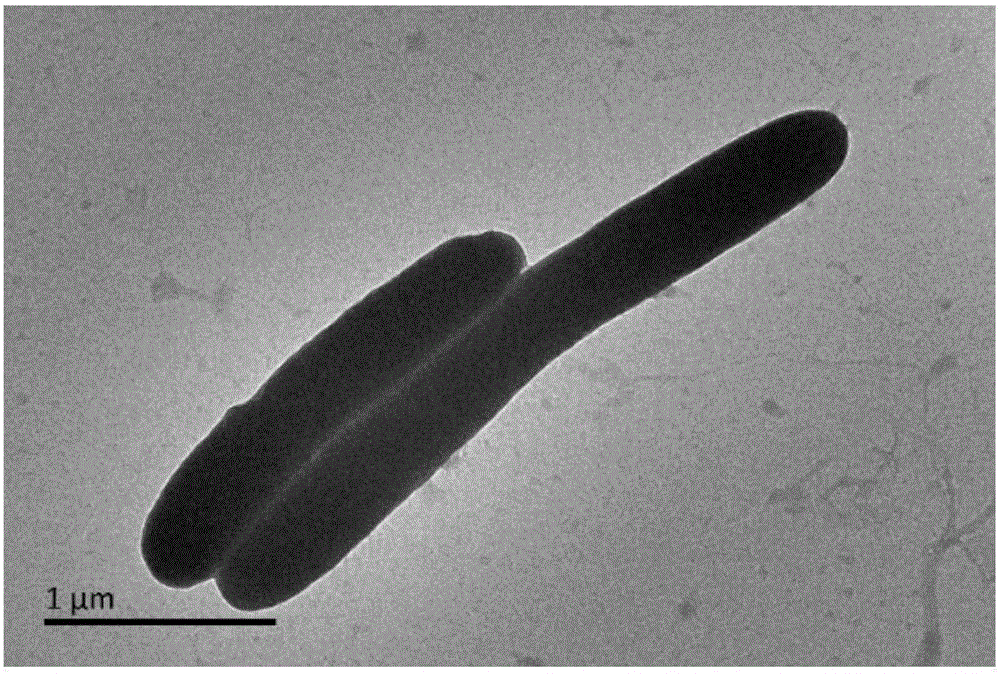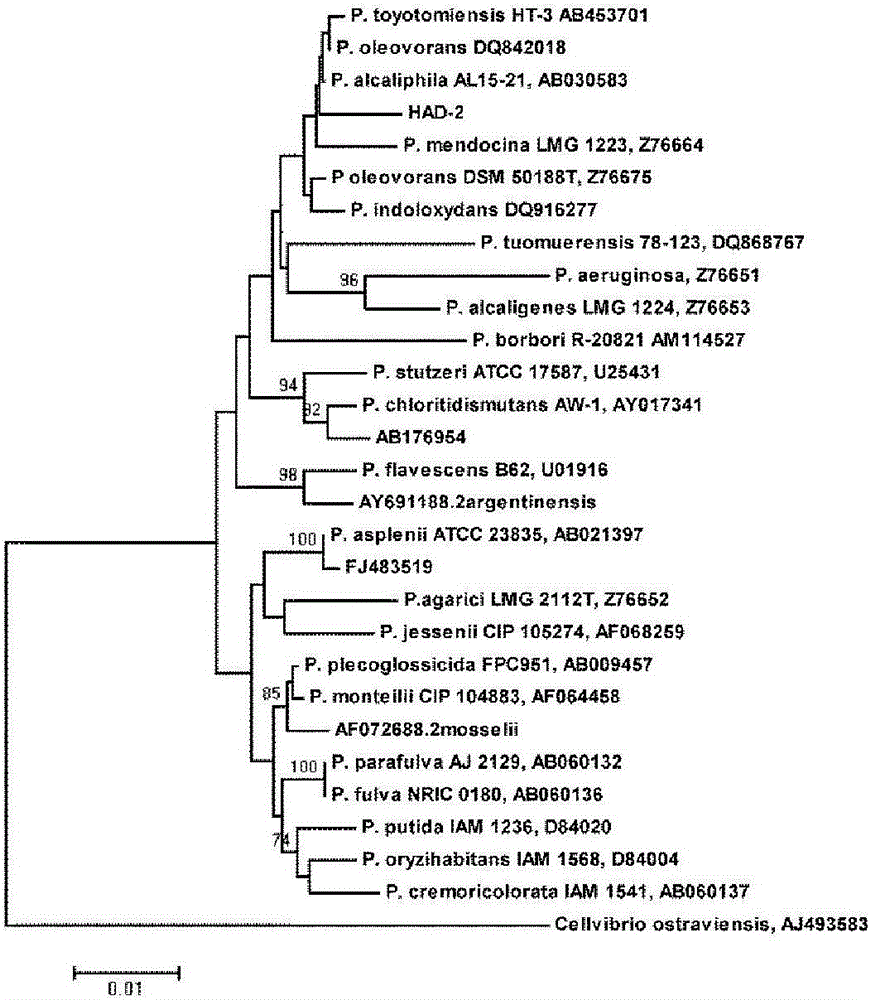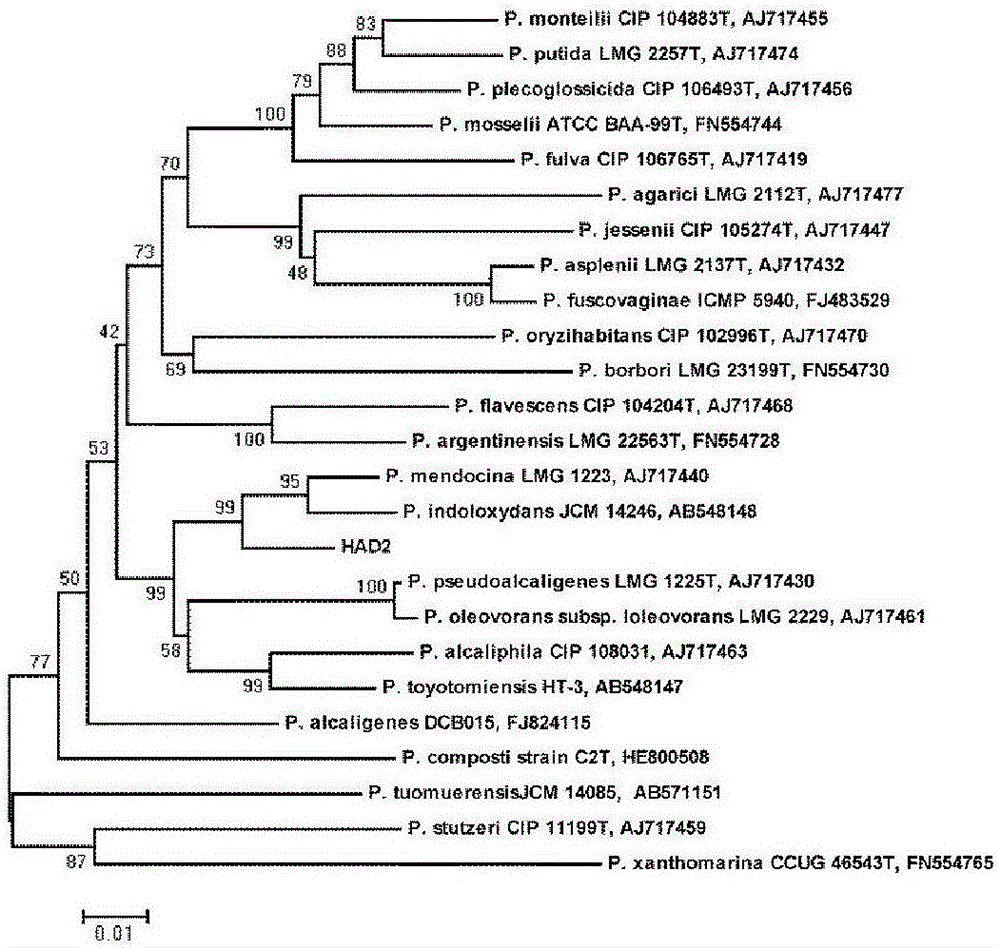Heterotrophic nitrification-aerobic denitrification high temperature resisting strain for producing floc, and application thereof
A technology of aerobic denitrification and heterotrophic nitrification, applied in the application of sewage treatment, heterotrophic nitrification-aerobic denitrification in the field of the temperature-resistant strain HAD-2 of M.
- Summary
- Abstract
- Description
- Claims
- Application Information
AI Technical Summary
Problems solved by technology
Method used
Image
Examples
Embodiment 1
[0027] Example 1: Separation and purification of Pseudomonas mendoza strain HAD-2 of heterotrophic nitrification-aerobic denitrification
[0028]The samples were screened and separated from the activated sludge in Dongying Kenli Petrochemical Wastewater Treatment Plant, which was operating stably.
[0029] Medium formula: denitrification medium (g / L): sodium succinate 4.7, KNO 3 1.5, KH 2 PO 4 1.5, NaHPO 4 7.9, Mg 2 SO 4 ··7H 2 O 0.5, trace element solution 1mL; pH 7.5. Trace element solution (g / L): EDTA 50.0, ZnSO 4 2.2, CaCl 2 5.5g / L, MnCl 2 4H 2 O 5.06, FeSO 4 ·7H 2 O 5.0, (NH 4 ) 6 Mo 7 o 24 4H 2 O 1.1, CuSO 4 ·5H 2 O 1.57, CoCl 2 ·6H 2 O 1.61. Bromophenol blue (BTB) screening medium (g / L): L-asparagine 1.0, KNO 3 1.0, CH 3 COONa 8.5, KH 2 PO4 1.0, FeCl 2 ·6H 2 O0.05, CaCl 2 2H2O 0.2, MgSO 4 ·7H 2 O 1.0, bromophenol blue (BTB) solution (1% BTB and 99% ethanol) 5 mL; pH 7.0-7.3. Heterotrophic nitrification medium (g / L): with NH 4 Cl ins...
Embodiment 2
[0031] Embodiment two: identification of bacterial strain HAD-2
[0032] Strain morphology: observe the colony morphology of a single colony of the purified strain HAD-2, perform Gram staining, and observe with a transmission electron microscope. The bacterial strains were fixed with 2.5% glutaraldehyde, fully rinsed with buffer solution, dropped on the copper grid, stained with phosphotungstic acid, and observed by transmission electron microscope under high vacuum conditions. see results Attached picture 1 .
[0033] Physiological and biochemical experiments: According to the "Berger Bacteria Identification Handbook" and "Common Bacteria Identification Handbook" for physiological and biochemical identification, see the results surface 1 . The growth was measured at different temperatures, and it was found that the strain could grow at 15-45°C. It was a high-temperature-resistant strain and grew rapidly at 45°C.
[0034] surface 1 Physiological and biochemical char...
Embodiment 3
[0039] Embodiment three, the preparation of bacterial strain HAD-2 bacterial suspension
[0040] Inoculate a single HAD-2 colony into LB medium, culture at 35°C for 12-16 hours, and centrifuge to remove the supernatant. 0.9% sterilized physiological saline was used to resuspend the bacterial pellet to obtain the HAD-2 bacterial suspension. The LB medium contains (g / L): 10g peptone, 5g yeast extract, 10g sodium chloride, adjust the pH to 7.0, and sterilize at 121°C for 20 minutes.
PUM
 Login to View More
Login to View More Abstract
Description
Claims
Application Information
 Login to View More
Login to View More - R&D
- Intellectual Property
- Life Sciences
- Materials
- Tech Scout
- Unparalleled Data Quality
- Higher Quality Content
- 60% Fewer Hallucinations
Browse by: Latest US Patents, China's latest patents, Technical Efficacy Thesaurus, Application Domain, Technology Topic, Popular Technical Reports.
© 2025 PatSnap. All rights reserved.Legal|Privacy policy|Modern Slavery Act Transparency Statement|Sitemap|About US| Contact US: help@patsnap.com



